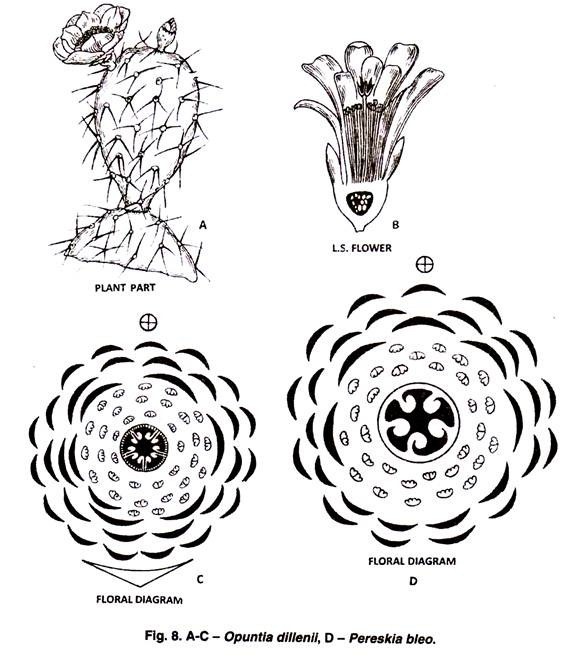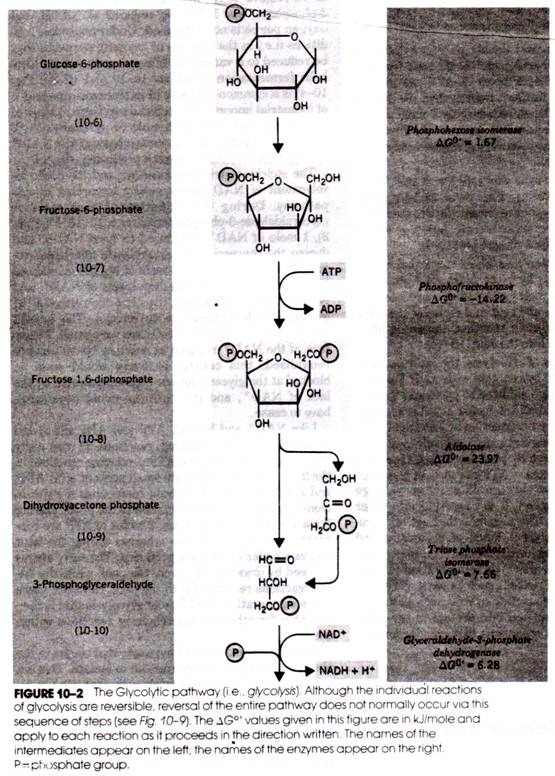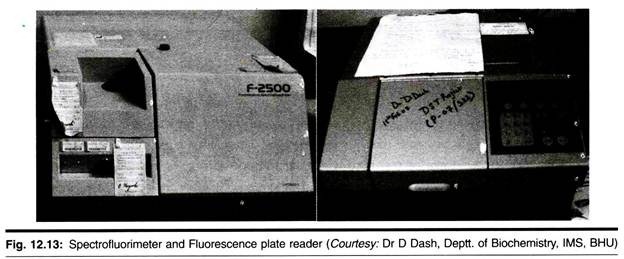ADVERTISEMENTS:
Here is a list of thirty important herbs: 1. Dorstenia Indica 2. Opuntia Dillenii 3. Pereskia bleo 4. Cereus Flagelliformis 5. Polygonum Glabrum 6. Polygonum plebejum 7. Rumex deutatus 8. Polygonum barbatum 9. Antigonon leptopus 10. Chenopodium album 11. Beta vulgaris 12. Viola tricolor 13. Corchorus Capsularis 14. Corchorus aestuans 15. Triumfetta pentandra 16. Antirrhinum Orontium and Others.
Herb # 1. Dorstenia Indica:
Habit: Perennial herb.
Stem: Stunted, Cylindrical, Unbranched and covered with leaf scars.
ADVERTISEMENTS:
Leaf: Simple, Stipulate, palmately lobed dentate, Multicostate reticulate Ventaion with milky latex.
Inflorescence: Flattened Discoid Cyme, Monoecious.
Flower: Ebracteate, Sessile, Unisexual, Incomplete, Actinomorphic, Embedded within the receptacle, Hypogynous.
Male flower:
ADVERTISEMENTS:
Perianth: Fused with receptacle.
Androecium: Usually single stamen, Filament short, Anthers small, cylindrical.
Gynoecium: Absent.
Female flower:
Perianth: Fused with receptacle
Androecium: Absent
Gynoecium:
Bicarpeuary, Syncarpous, Unilocular, Superior, Ovule one, Pendulous, style long, lateral, stigma bifid. Ovary embedded within the receptacle.
Herb # 2. Opuntia Dillenii:
A spiny xerophytic herb. Stem is phylloclade, jointed, Leaves reduced to Glochidia, represented by cluster of spines as areoles, with tuft of 4, 6 prickles. (Fig 8 A-C)
Inflorescence: Solitary flowers.
Flower:
ADVERTISEMENTS:
Sessile, Ebracteate, Bisexual, Actinomorphic, Epigynous, Brightly coloured large flower.
Perianth:
Indefinite number of tepals showing gradual transition into petals.
Androecium:
ADVERTISEMENTS:
Indefinite number of stamens, Polyandrous, Inserted at the base of tepals on the margin of calyx tube. Dorsifixed, Dithecous, Introrse anthers.
Gynoecium:
Multicarpellary, Syncarpus, Inferior, Unilocular, Parietal placentation, Ovules circinotropous.
Fruit: Berry, Pyriform, truncate, Edible.
Herb # 3. Pereskia bleo:
A leafy cactus, also called as Rose cactus or leaf cactus, Found in shady moist places. Prickly shrub 2 m. tall with large orange flowers. Fig. 8 D.
Leaves:
Alternate, broad, flattened, deciduous, 2-20 cm. long petiole, Areoles in the axil of leaves, usually with wool, bearing spines and leaves.
Spines 0-8 on young primary aeroles on twigs, to numerous on trunk., Unequal in length.
Flower: Solitary, Rosceous
ADVERTISEMENTS:
Perianth: Many Polyphyllous Tepals.
Androecium: ∞, Polyandrous.
Gynoecium: ∞ Syncarpous, Inferior. Parietal placentation.
Fruit: Solitary, pear shaped red or orange.
Herb # 4. Cereus Flagelliformis:
Syn. Discocactus flagelliformis
ADVERTISEMENTS:
It is a Xerophyte, found in Lithophytic forests, commonly called as Rat’s tail cacti. (Fig. 9)
Stem:
Ascending, later prostrate or Pendent, Profusely branched at the base. 1-2 m long or more, 8-24 mm. thick, ribs 7-14, obtuse, margins, tuberculate areoles minute, whitish, inter nodes 4-8 mm spine, spine 8-20, 3-8 mm long, bristle like.
Flower:
Zygomorphic, 7-10 cm long, 2-4 cm. wide, Limb Bilaterally Symmetrical, Oblique, Diurnal, Odourless, Pericarpel greenish with acute bracteoles, Receptacle 3-5 cm. long curved just above the pericarp.
Perianth:
∞ Tepals, Outer tepals, linear-lanceolate, Reflexed, 2-3 cm. long, 6 mm. wide, Red, Inner tepals narrowly oblong, 10 mm wide red, or pink on the margins, Spiral.
Androecium:
Indefinite number, White to pale pink, Erect, exdterted.
Gynoecium:
Multicarpellary, Inferior, Unilocular, Parietal placentation.
Fruit:
Globose 10-12 mm. Long, Red, Bristly, Pulp Yellowish, Seeds ovoid, Brownish Red.
Herb # 5. Polygonum Glabrum:
Habit:
Herb (Fig 10- A, C)
Stem:
Aerial, Erect or Semi erect, Branched, Solid, Nodes Swollen, Herbaceous, Solid and cylindrical.
Leaf:
Stipulate, Ochreate stipules, Ochrea cilia, Leaves simple, alternate, sub- sessile, Lenceolate, Unicostate reticulate. Venation.
Inflorescence:
Racemose, Terminal Panicle.
Flower:
Bracteate, Ebracteolate, Small pedicellate, Actinomorphic, Bisexual, Pentamerous, Hypogynous, Small and Pink.
Perianth:
5 tepals, Polyphyllous, Quincuncial
Androecium:
7-8 stamens in two whorls. Outer 5 and inner 2 or 3, Polyandrous, Anther dithecous, Basifixed, Stamen of inner whorl extrorse and outer whorl introrse.
Gynoecium:
2-3 Carpels, Syncarpous Superior, Unilocular with single basal ovule, Style long, Stigma bifid.
Fruit:
1 seeded nut with curved embryo.
Herb # 6. Polygonum plebejum:
An Annual herb, Prostrate, Profusely branched, Herbaceous, Lower internodes often longer than leaves while upper internodes are very short. Leaves simple, Stipulate (Ochreate), Sessile and Lanceolate. (Fig. 10 B, 1)
Inflorescence:
Axillary, 2-3 Flowers is the axil of leaf.
Flower:
Pedicellate, Bracteate, membranous bract, Bisexual. Actinomorphic, Hypogynous.
Perinath:
5 tepals, Polyphyllous, Pink, Quincuncial.
Androecium:
8 Stamens in two whorls of 5 and 3. 5 in the outer whorls are introrse while 3 of the inner whorl are extrorse; Filaments dialated at the base, Anthers Dithecous and Basifixed.
Gynoecium:
Tricarpellary, Syncarpous, Triangular, Superior, Unilocular, Basal placentation. Ovary present on a nectar secreting disc.
Fruit:
Trigonous nut.
Herb # 7. Rumex deutatus:
Annual herb with herbaceous, Erect angular, Branched, Solid stem. Leaves simple, Alternate, Stipulate, stipules deciduous, Ochreate. Petiolate. (Fig 11 A, D)
Inflorescence:
Racemose clusters.
Flower:
Ebracteate, Ebracteolate, Pedicellate, Actinomorphic, Bisexual, Hypogynous and Trimerous. Green and Inconspicuous.
Perianth:
6 tepals is two whorls of three each; Polyphyllous, Sepaloid, Valvate, Inner three tepals enlarge in fruit and become winged.
Androecium:
6 Stamens in two whorls of three each., outer whorl is opposite to outer tepals while inner whorl is opposite to inner tepals. Polyandrous, Anthers dithecous, Basifixed and Introrse.
Gynoecium:
Tricarpellary, Syncarpous, Ovary superior, Trigonous, Unilocular, Basal placentation, Style short, Stigma 3 fimbriate or fringed.
Fruit:
Single seeded trigonous nut.
Herb # 8. Polygonum barbatum:
Habit:
Willd Annual Herb (Fig 11 C, F)
Stem:
Herbaceous, Erect, Aerial, Cylindrical, Solid with swollen nodes.
Leaf:
Simple, Stipulate, Ochreate stipules, Ochrea ciliate, cilia exceeding the length of tube, leaf sessile, Lanceolate, Unicostate reticulate ventation.
Inflorescence: Spike.
Flower:
Bracteate, Ebracteolate, Pedicellate, Very small, Bisexual, Actinomorphic, Hypogynous.
Perianth:
5-6 tepals in two whorls or biseriate, Polyphyllous, Petaloid, Quincuncial, Pink.
Androecium:
6-9 Stamens in two whorls. 6 stamens united in pairs while. 8 stamens represent staminodes. Anthers dithecous and introrse.
Gynoecium:
Tricarpellary, Syncarpous, Superior, Unilocular, Style three, Stigma capitate or fringed, Ovule one, erect.
Fruit:
1 seeded nut with curved embryo.
Herb # 9. Antigonon leptopus:
(Coral wine)
A Perennial climbing herb. Climbing by means of tendrils which are modified branches or stem tendrils; Weak herbaceous plant with simple, Exstipulate, Alternate, Cordate leaves. (Fig 12)
Inflorescence:
Short three flowered cymes arranged on long axillary inflorescence axis. The terminal point of the axis terminates into tendril.
Flower:
Bracteate, Pedicellate, Bisexual, Actinomorphic, Hypogynodsus.
Perianth:
5 tepals, Polyphyllous, Petaloid, Quincuncial, Pink.
Androecium:
Indefinite number of stamens arranged in whorls, Polyandrous, Epiphyllous, Filaments coloured, Anthers dithecous, Dorsifixed, Introrse.
Gynoecium:
Tricarpellary, Syncarpous, Ovary superior, Unilocular, one ovule on Basal Placenta, Style 3, Stigma 3, Capitate, Nectary present below Ovary.
Fruit:
Single Seeded Nut.
Herb # 10. Chenopodium album:
It is wild or cultivated annual herbaceous plant. The stem is Aerial, Erect. Angular, Branched with Exstipulate, Alternate, and Simple Leaves. (Fig 13)
Inflorescence:
Cluster of Cymose forming Axillary or terminal spikes or panicles.
Flower:
Ebracteate, Ebracteolate, Sessile, Incomplete, Actinomorphic, Pentamerous, Bisexual, Hypogynous; very small or inconspicuous and green.
Perianth:
5 tepals, Gampohyllous, Sepaloid, Minute, Green, Persistent Quincuncial.
Androecium:
5 Stamens, Polyandrous, Antitepalous, Anthers dithecous, Basifixed, Introrse, Dehiscing longitudinally.
Gynoecium:
Bicarpellary, Syncarpous, Superior, Unilocular, Basal placentation, Ovary globose with single campylotropous ovule, Style short, Stigma bifid.
Fruit:
Utricle enclosed in Perianth.
Herb # 11. Beta vulgaris:
It is an annual herb with thick tap root, Swollen Containing dark red juice and rich sugar content. It is edible. The stem is erect, Solid, Purplish green; Reduced with rosette radical leaves (Fig. 14) Inflorescence: Condensed Cyme.
Flower:
Bracteate, Sessile, Actinomorphic, Bisexual, Perigynous.
Perianth:
3-5 tepals, Curved, Polyphyllous, Sepaloid, Imbricate.
Androecium:
5 stamens, Antitepalous, Present on a disc, Anthers dithecous, Introrse, Dehiscing longitudinally.
Gynoecium:
2-3 Carpels, Syncarpous, Semi-inferior, Unilocular with single Basal campylotropous ovule. Ovary sunken in a disc of hypanthium.
Fruit:
Aggregate Utricle in persistent perianth.
Herb # 12. Viola tricolor:
Annual ornamental herb with erect, Branched, Angular, Fistular, Herbaceous stem (Fig. 19)
Leaf:
Simple, Stipulate Foliaceous Stipule, Alternate, Petiolate, Oblong, Unicostate Reticulate Venation.
Inflorescence:
Cymose, Solitary axillary.
Flower:
Bracteate, Bracteolate, Bisexual, Zygomorphic, Pentamerous, Hypogynous, Large and violet coloured.
Calyx:
5 Sepals, Polysepalous, Apendiculate and green.
Corolla:
5 petals, Polypetalous, unequal, Anterior petal forms a spur, Imbricate.
Androecium:
5 Stamens, form a ring like Structure round the ovary. Short filament, Anther introrse, Dithecous and Connate, Connectives of two anterior stamen are spurred and project into the spur of petal.
Gynoecium:
Tricarpellary, Syncarpous, Superior, Unilocular, Parietal, Placentation, Style short, Stigma lobed.
Fruit:
3 Valved Capsule.
Herb # 13. Corchorus Capsularis:
Commonly called Jute.
It is annual herb with Erect, Branched Glabrous, Woody, Solid stem. Best fibres are present in stem (Fig. 20 A-D)
Leaf:
Stipulate, Fusiform stipules, Simple, Alternate, Lanceolate, Petiolate, Glabrous, Unicostate reticulate.
Inflorescence:
Axillary Cyme
Flower:
Bracteate, Pedicellate, Actinomorphic, Bisexual, Pentamerous, Hypogynous.
Calyx:
5 Sepals, Polysepalous, Valvate.
Corolla:
5 petals, Polypetalous, Twisted
Androecium:
∞ Stamens, Polyandrous, Many whorls, Anthers dithecous, Introrse.
Gynoecium:
Pentacarpellary, Syncarpous, Superior, Pentalocular, Axile placentation.
Fruit:
Capsule, Globose and ridged.
Herb # 14. Corchorus aestuans:
Annual herb with ovate leaves. (Fig. 20 E-F)
Flower:
Bracteate, Bracteolate, Pedicellate, Actinomorphic, Bisexual, Pentamerous, Hypogynous.
Calyx:
5 Sepals, Polysepalous, Valvate.
Corolla:
5 petals, Polypetalous, Valvate.
Androecium:
∞ Stamens, Polyandrous in many whorls borne on Androgynophore, Anther dithecous, Introrse.
Gynoecium:
Tricarpellary, Syncarpous, Superior, Trilocular, Axile placentation.
Fruit:
Six winged capsule.
Herb # 15. Triumfetta pentandra:
A large annual herb with branched hairy stem. (Fig. 21)
Leaf:
Stipulate, Simple, Alternate, Ovate or rhomboidal, Generally 3 lobed, Upper lobe narrow and acute, Tomentose, Multicostate reticulate venation.
Inflorescence:
Lateral Extra axillary Cluster.
Flower:
Bracteate, Actinomorphic, Pentamerous, Hypogvnous, Bisexual, very small.
Calyx:
5 Sepals, Polysepalous. Valvate, Longer than petals, Villous outside.
Corolla:
5 petals, Polypetalous, Imbricate.
Androecium:
5 Stamens, Polyandrous, Filaments longer than petals, Stout, short androgynophore present, Anther dithecous Introrse.
Gynoecium:
Bicarpellary, Syncarpous, Superior, Bilocular, Axile placentation, style one, Stigma bifurcated.
Fruit:
Oblong capsule covered with hooked spines.
Herb # 16. Antirrhinum Orontium:
Annual Herb with erect, Aerial, Branched, Cylindrical, Solid Stem (Fig. 24 A-D).
Leaf:
Alternate, Simple, Exstipulate, Linear-lanceolate, Unicostate reticulate. Inflorescence: Solitary Axillary
Flower:
Pedicellate, Bracteate, Zygomrophic, Bisexual, Pentamerous, Hypogynous.
Calyx:
Sepals 5, Gamosepalous, Persistent, Imbricate Corolla: 5 Petals, Gamopetalous, 2/3 bilabiate personate, Imbricate.
Androecium:
4 Stamens, Didynamous, Epipetalous, Posterior stamen absent. Anther dithecous, Introrse.
Gynoecium:
Bricarpellary, Syncarpous, Superior, Bilocular, Axile placentation, Placenta swollen, Style Simple, Stigma bilobed.
Fruit:
Capsule.
Herb # 17. Melochia Corchorifolia:
An erect herb or undershrub with branched, Cylindrical, Hairy stem (Fig. 23 A-C)
Leaf:
Simple, Alternate, Stipulate, Stipules lanceolate and Stellate hairy. Leaf oblong-ovate, Unicostate reticulate.
Inflorescence:
Terminal cluster of cyme.
Flower:
Bracteate, Bracteolate, Actinomorphic, Bisexual, Pentamerous, Hypogynous, Small.
Calyx:
5 toothed, Gamosepalous, Cup shaped, Valvate, Hairy.
Corolla:
5 Petals, Polypetalous, Twisted.
Androecium:
5 Stamens, Monadelphous, Antipetalous, Anthers dithecous,
Gynoecium:
Pentacarpellary, Syncarpous, Superior, Pentalocular, Axile placentation, Style 5, Stigma 5.
Fruit:
Small 5 valved hispid capsule.
Herb # 18. Veronica anagallis:
Aquatic, Annual, Herb. (Fig. 24 F)
Inflorescence:
Raceme.
Flower:
Bracteate, Pedicellate, Zygomorphic, Bisexual, Tetramerous, Hypogynous.
Calyx:
4 Sepals, Poly-sepalous, Persistent Quincuncial.
Corolla:
4 Petals, Gamopetalous, 1/3, Anterior petal is small, Imbricate, Small.
Androecium:
2 Stamens, Polyandrous, Epipetalous, Long Filaments, Anther dithecous, Introrse.
Gynoecium:
Bicarpellary, Syncarpous, Superior, Bilocular, Axile Placentation, Style long, Stigma capitate.
Fruit:
Capsule.
Herb # 19. Majus Japonicus:
Syn. M.rugosus Lour.
Prostrate herb with weak, reduced stem. (Fig. 25 A-B)
Leaf:
Radical forming rosette, Exstipulate Sessile, Spathulate, Unicostate, reticulate.
Inflorescence:
Raceme, raised on a scape.
Flower:
Bracteate, Pedicellate, Zygomorphic, Bisexual, Pentamerous, Hypogynous.
Calyx:
5 Sepals, Gamosepalous, Valvate.
Corolla:
5 Petals, Gamopetalous, Personate, (2/3), upperlip short 2 lobed and Lower lip spreading with 3 lobes, Valvate.
Androecium:
4 Stamens, Polyandrous, Epipetalous, Didynamous, Filaments Long and curved, Anther dithecous, Posterior stamen absent.
Gynoecium:
Bicarpellary, Syncarpous, Superior, Bilocular, Axile placentation, Style long.
Fruit:
Capsule with persistent calyx.
Herb # 20. Linderbergia indica:
A-B-Syn. L. urticifolia Lehm.
Annual herb with Aerial Erect, Branched, Solid, Cylindical, Hairy Stem (Fig. 25 C-E)
Leaf:
Exstipulate, Simple, Opposite Decussate, Petiolate, Ovate Unicostate reticulate venation.
Inflorescence:
Solitary Axillary.
Flower:
Bracteate, Pedicellate, Zygomorphic, Bisexual, Pentamerous, Personate, Hypogynous.
Calyx:
5 Sepals, Gamosepalous, campanulate, Imbricate.
Corolla:
5 Petals, Gamopetalous, 2/3 Personate, Imbricate, Purple.
Androecium:
4 Stamens, Epipetalous, Didynamous, Posterior stamen absent, Anthers dithecous, Introrse.
Gynoecium:
Bicarpellary, Syncarpous, Nectar secreting disc present below ovary, Superior, Bilocular, Axile placentation, Placenta swollen, Style long stigma bifid.
Fruit:
Capsule.
Herb # 21. Scoparia dulcis:
Small Erect, Perennial Herb. (Fig. 25-G)
Inflorescence:
Solitary axillary Cyme.
Flower:
Bracteate, Actinomorphic, Bisexual, Hypogynous, Pentamerous.
Calyx:
4 Sepals, Connate at the base Persistent, Imbricate.
Corolla:
4 Petals, Gamopetalous, Rotate, Imbricate, Corolla throat densely hairy.
Androecium:
4 Stamens, Epipetalous, Subequal, Anthers subsegittate.
Gynoecium:
Bicarpellary, Syncarpous, Superior, Bilocular, Many ovules in each locule, Placenta Swollen, Axile Placentation, Style Subclavate, Stigma Terminal.
Fruit:
Many seeded globose, Septicidal, Capsule.
Herb # 22. Heliotropium Indicum:
Annual weed, Aerial, Erect, Cylindrical, Branched, Hispid, Herbaceous. (Fig. 27)
Leaf:
Alternate, Simple, Petiolate, Ovate, Linear, Lanceolate (H. strigosum) Unicostate reticulate venation.
Inflorescence:
Terminal two ranked spikes with marked dorsiventral uncoiling as the flowers open, Uniparous scorpioid.
Flower:
Bracteate, Pedicellate (Short), Actinomorphic, Bisexual, Pentamerous, Hypogynous.
Calyx:
5 Sepals, Gamosepalous, Persistent tubular, Imbricate.
Corolla:
5 Petals, Gamopetalous, Funnel shaped, Imbricate, 5 scales in throat of corolla tube alternating stamen.
Androecium:
5 Stamens, Epipetalous, Alternipetalous, Anthers conical, Dithecous.
Gynoecium:
Bicarpellary, Syncarpous, Superior, Bilocular becoming Tetralocular due to false septum, Axile placentation, Ovary hairy, Style simple Gynobasic, Stigma simple and capitate.
Fruit:
Four nutlets, Carcerulus.
Herb # 23. Trichodesma Indicum:
Annual herb with rough terrete stem, Herbaceous covered with dense hairs. (Fig, 28)
Leaf:
Simple, Ovate, Lanceolate, Alternate, Covered with hispid trichomes, In T. cimplexicaule the leaves are Sessile, Amplexicaui and flowers are large.
Inflorescence:
Cymose.
Flower:
Pedicellate, Ebracteate, Bisexual, Actinomorphic, Hypogynous, Pentamerous.
Calyx:
5 Sepals, Polysepalous, Tubular, Hairy, 5 toothed, Persistent.
Corolla:
5 Petals, Gamopetalous, Tubular, 5 Lobed, with reddish spots.
Androecium:
5 Stamens, Epipetalous, Alternipetalous, Short filament, Sagittate anther, Dithecous, Introrse
Gynoecium:
Bicarpellary, Syncarpous, Bilocular, Becoming tetraiocular due to false septum, Axile placentation.
Fruit:
Carcerulus of 4 nutlets.
Herb # 24. Colocasia Esculenta:
Syn. C. antiquorum Schott.
Perennial tuberous gregarious herb. Stem is corm. (Fig. 29)
Leaf:
Simple, Large, Broad, Petiolate, Sheathing leaf base, Lamina Peltate or Cordate, Reticulate Venation, Leaves arise in a Crowded manner from reduced aerial stem.
Inflorescence:
Spadix developed by a spathe. Basal part of spathe is convolute, Elliptic, Tubular, Upper part Lanceolate. Spadix has polygamous flowers as male, female and neutral.
Perianth:
Absent.
Androecium:
Only in male flowers, Stamens 6 in two whorls, Anthers Dithecous, Extrorse.
Gynoecium:
Only in female flowers, Tricarpellary, Syncarpous, Unilocular, Parietal placentation
Fruit:
Ovoid berry.
Floral Formula:
Herb # 25. Zingliber Offcinale Rose:
Commonly called Ginger or Adrak. A Perennial herb with underground rhizome having aromatic smell. (Fig. 30 A-D)
Leaf:
Simple, Petiolate, or Sessile, Linear-Lanceolate, Ligulate, Parallel Venation.
Inflorescence:
Solitary in spike or heads.
Flower:
Bracteate, Zygomorphic, Bisexual, Trimerous, Epigynous.
Perianth:
6 Tepals in two whorls of 3 each. May be distinguished as calyx and corolla. The Calyx tubular and toothed.
Androecium:
6 Stamens in two whorls of 3 each, Only Median Posterior stamen of inner whorl is functional and epiphyllous. Other two stamens of inner whorls unite to form a bilipped staminode called Labellum. The Stamens of outer whorl are staminodes.
Gynoecium:
Tricarpellary, Syncarpous, Inferior, Trilocular or Unilocular, Axile placentation, Style one, Stigma one, Style held in a groove in the fertile stamen.
Fruit:
Capsule with arillate endospermic seeds.
Herb # 26. Hedychium Coronarium:
Aromatic rhizomatous herb with rhizome, Horizontal, Sympodial Pseudo- aerial shoots 3-4 mm. in height. (Fig. 30 E-F)
Leaf:
Distichous, Lanceolate, Elliptic, Ligulate, Sheathing base.
Inflorescence:
Terminal, Dense, Spike or Cincinnous.
Flower:
Bracteate (Ovarlapping), Zygomporphic, Bisexual, Trimerous, Epigynous.
Calyx:
3 Sepals, Tubular, Apex unequally lobed, deeply split on one side.
Corolla:
Tubular, Slender, Long, 3 petals, Subequal, upper larger than laterals.
Androecium:
3 Staminodes, Petaloid. Inner a large labellum, Adnate to Corolla tube, Labellum, broadly obovate, bifid, Clawed, Stamen one, Anther spurred, Connective crested.
Gynoecium:
Tricarpellary, Syncarpous, Inferior, Bilocular, Axile placentation, globose, style filifom, stigma funnel shaped, Ciliate.
Fruit:
Capsule.
Herb # 27. Tradescantia Virginiana:
Commonly called Spiderwort. Perennial Herb with Solid, Succulent, cylindrical branched stem. (Fig. 31 A-C)
Leaf:
Simple, Exstipulate, Sessile with sheathing leaf base, Amplexicaule, Lanceolate, Conduplicate, Multicostate parallel venation.
Inflorescence:
Terminal, Umbellate cyme, Subtended by 2 spathaceous bracts.
Flower:
Bracteate, Ebracteolate, Pedicellate, Actinomorphic, Trimerous, Hypogynous, Bisexual.
Calyx:
3 Sepals, Polysepalous, Petaloid, Valvate
Corolla:
3 Petals, Polypetalous, Clawed, Imbricate.
Androecium:
6 Stamens, All fertile, In two whorls, Outer whorl opposite to sepals and inner whorl opposite to petals. Anther dithecous, Reniform.
Gynoecium:
Tricarpellary, Syncarpous, Superior, Trilocular, Axile placentation, Style simple, Stigma trifid.
Fruit: Capsule
Herb # 28. Commelina Benghalensis:
Annual herb with slender, Diffuse, Branched (Fig. 31 D-F) stem.
Leaf:
Exstipulate, Simple, Sessile or subsessile, Sheathing leaf base, Ovate or elliptic ovate, Multicostale parallel venation.
Inflorescence:
In bifid Cyme, Emerging one at a time from a conduplicate spathe (bract.). Flowers of upper branch of Cyme are small, Deciduous, Lower flowers are fertile.
Flower:
Bracteate, Pedicellate, Zygomorphic, Trimerous, Bisexual Hypogynous. Some flowers are subterranean and cleistogamous.
Perianth:
6 Tepals in two whorls of 3 each. Outer whorl represents sepals, Polysepalous, Membranous. Inner whorl represents corolla where one is larger being conduplicate.
Androecium:
6 Stamens, Three Fertile and 3 staminodes. Anthers Dithecous, Introrse.
Gynoecium:
Tricarpellary, Syncarpous, Superior, Trilocular, Axile placentation, Style simple, Filiform, Stigma capitate.
Fruit:
Pyriform, 3 Valved Capsule, Hidden in spathe
Herb # 29. Narcissus Poeticus:
Commonly called as Pheasant’s eye, Dafodil or Nargis.
It is a perennial herb. Stem underground, bulbous (Fig. 33 A-D)
Leaf:
Exstipulate, Radical, Sessile, Long, Linear, Strap Shaped, Alternate, Multicostate parallel Venation.
Inflorescence: Umbellate Cyme, Flowers enclosed within a pair of fused bract known as Spathe, Spathe membranous.
Flower:
Bracteate, Pedicellate, Actinomorphic, Bisexual, Trimerous, Epigynous.
Perianth:
6 Tepals in two whorls of 3 each; Gamophyllous, Corona present.
Androecium:
6 Stamens, Polyandrous, Epiphyllous, Outer whorls of 3 opposite the outer perianth segments situated at the base of corona, Inner whorl of 3 face the inner perianth segments situated inside perianth tube, filaments short, Anthers long and Kidney shaped. Dithecous and introrse.
Gynoecium:
Tricarpellary, Syncarpous, Inferior, Trilocular, Axile placentation, Style upto the level of corona, Stigma trilobed.
Fruit:
Loculicidal locule.
Herb # 30. Polianthes Tuberosa:
Commonly called Tube rose, Ornamental perennial herb (Fig. 33 E-G).
Leaf:
Radical, Simple, Linear, Sheathing Leaf base, Parallel venation. Inflorescence: Terminal spike on stout scape.
Flower:
Bracteate, Pedicellate, Actinomorphic Bisexual, Epigynous, Trimerous.
Perianth:
6 Tepals in two whorls of 3 each Gamophyllous, Tubular, long tube, Fragrant.
Androecium:
6 Stamens in two whorls of 3 each, Epiphyllous, Short filament, Anther dithecous, Introrse.
Gynoecium:
Tricarpellary, Syncarpous, Inferior, Trilocular, Axile placentation, Style long, Stigma trifid.
Fruit:
Capsule.































